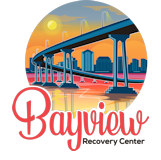Stimulant Addiction
Stimulant Addiction: Signs, Effects, and Treatment Options
A significant number of individuals in the United States consume stimulants daily. For instance, caffeine found in coffee and nicotine present in cigarettes are both classified as stimulants. Certain stimulants, such as Ritalin and Adderall, are frequently prescribed by healthcare professionals for the treatment of attention-deficit/hyperactivity disorder (ADHD). Conversely, other stimulants, including amphetamines, methamphetamine (meth), and cocaine, are prohibited by law.
Given the wide range of potency and accessibility of stimulants, the consequences of their use can differ significantly, from relatively mild insomnia caused by excessive coffee intake to potentially fatal overdoses from cocaine. Regardless of the level of severity, various treatment options are available at Bayview Recovery Center in San Diego, California to assist individuals in overcoming stimulant use disorder.
What Are Stimulants?
Stimulants are classified as drugs that enhance or elevate the functioning of the central nervous system. These substances can induce sensations of euphoria and a sense of well-being, while also boosting alertness, concentration, and energy levels. When individuals consume stimulants to the extent that they adversely impact their lives and lead to distress, they may fulfill the criteria for stimulant use disorder.
Due to their ability to enhance focus and energy levels, there exists a temptation for individuals to misuse these substances. This misuse can vary from a young adult acquiring Adderall from a peer to facilitate studying, to an individual grappling with a long-standing meth addiction. In some cases, excessive coffee consumption can lead to caffeine dependence.
How Do Stimulants Work?
Stimulant drugs exert their energizing effects by acting on the central nervous system (CNS) and influencing various neurotransmitters in the brain, particularly dopamine, norepinephrine, and serotonin. More specifically, these substances enhance the activity of norepinephrine and dopamine. Norepinephrine plays a crucial role in regulating physiological functions governed by the CNS, including heart rate, blood pressure, and respiration. In contrast, dopamine is associated with the reinforcement of pleasurable behaviors.
Given their effects on both the brain and body, stimulants carry a significant risk of misuse. Individuals may abuse these substances, even in the absence of a prescription, to alleviate feelings of physical and mental exhaustion, suppress appetite for weight management, enhance cognitive alertness, or induce sensations of euphoria or a “high.”
Types of Stimulants
Stimulant use disorder, commonly referred to as stimulant addiction, is characterized by the persistent and compulsive consumption of stimulants, even in the face of adverse effects.
When professionals in substance use treatment assess an individual for a stimulant use disorder, they reference the Diagnostic and Statistical Manual of Mental Disorders (DSM-5) to support their evaluation.
The DSM-5 indicates that a stimulant use disorder may be present if an individual exhibits a minimum of two of the following signs and symptoms within 12 months. The different types of stimulants can be separated into two categories:
- Prescription stimulants: Prescription drugs are substances that are legally utilized for valid medical purposes.
- Illicit stimulants: Illicit drugs are utilized for leisure activities.
Prescription Stimulants
Prescription stimulants are typically prescribed to assist individuals in managing attention-deficit/hyperactivity disorder (ADHD) or narcolepsy, a condition characterized by excessive daytime sleepiness. Among the most frequently prescribed stimulant medications are:
- Dexedrine (dextroamphetamine).
- Adderall (dextroamphetamine/amphetamine combination product).
- Ritalin, Concerta (methylphenidate).
Illicit Stimulants
- Cocaine: This product is derived from the leaves of the coca plant.
- Crack: This substance is derived from cocaine and appears as small crystalline formations.
- Bath salts: A substance that is produced unlawfully is referred to as synthetic cathinone.
- Khat: It is a stimulant obtained from the leaves of a plant, which can be consumed by chewing, similar to tobacco, or prepared as a tea.
- Methamphetamine: A substance resembling amphetamine, which is produced unlawfully, typically appears in either pill or powder form.
- Crystal meth: Crystal meth is a type of methamphetamine that appears as shiny, bluish-white crystals or may resemble glass.
Are Stimulants Addictive?
Irrespective of their legal classification, certain stimulants have the potential to cause addiction, which treatment professionals may identify as a stimulant use disorder. Prolonged misuse of stimulants can lead to the development of a stimulant use disorder, which may occur in as little as one week of usage, although such rapid onset is uncommon.
Signs and Symptoms of Stimulant Abuse
The utilization of illicit stimulants constitutes substance misuse. Indicators of prescription stimulant misuse include:
- Taking them in a way other than how they were prescribed. Examples of this include crushing and snorting the drug or mixing it with water and injecting it.
- Taking higher or more frequent doses than prescribed.
- Taking someone else’s medication.
- Taking prescription stimulants for the sole purpose of getting high.
Additionally, individuals may also engage in the misuse of prescription stimulants. The symptoms of stimulant dependence and addiction include:
Behavioral symptoms
- Deceptive behavior, lying, or stealing
- Meeting with multiple doctors in an attempt to gain multiple prescriptions for stimulants
- Visiting websites to order stimulants without a prescription
- Exhibiting excessive energy or motivation
- Aggressive or angry outbursts
- Risky or impulsive behaviors
Physical symptoms
- Changes (usually decreases) in appetite
- Twitches or jitteriness
- Rapid heartbeat
- Elevated blood pressure
- Weight loss
- Hair loss
- Sweating
- Skin problems
Cognitive symptoms
- Hyperfocus
- Flight of ideas
- Enhanced sensory awareness
- Racing thoughts
- Confusion
- Paranoia
- Hallucinations
- Delusions
- Poor judgment and decision-making
Psychosocial symptoms
- Anxiety
- Depression
- Mood swings
- Anger/aggressiveness
- Increased confidence
Although the signs and symptoms of stimulant abuse may vary among individuals depending on the specific stimulant, duration of use, and personal characteristics.
Causes and Risk Factors for Stimulant Abuse
Genetic Factors
Individuals raised in families where stimulant abuse is prevalent among parents or siblings exhibit a higher likelihood of engaging in similar behaviors. Research involving identical twins has demonstrated that genetics may influence an individual’s susceptibility to substance addiction, and recent studies are beginning to uncover potential genetic markers associated with this susceptibility.Environmental Factors
While genetic predisposition is a significant element in the likelihood of developing stimulant use disorder, the presence of substance abuse within the home environment further elevates this risk. For instance, students facing high expectations or intense academic pressures, such as those in medical programs, may be more prone to stimulant misuse.- Personal history of substance use or mental illness
- Family history of substance use or mental illness
- Familiarity with, and easy access to, stimulant medications
- Men are at higher risk than women
- Chronic exposure to high-stress
- Poverty
- Unemployment
- Personal history of trauma or violence
- High demands or expectations placed on oneself
- Exposure to stimulants in utero
Side Effects of Stimulant Abuse
- Social withdrawal
- Strain or breakdown of interpersonal relationships
- Separation, divorce, or loss of custody of children
- Damage to the liver, kidneys, lungs, or cardiovascular system
- Gastrointestinal issues
- Emergence of cognitive impairments, including difficulties with memory, concentration, attention, and problem-solving
- Unpredictable behavior
- Employment Termination
- Financial difficulties
- Seizures
- Fatality
- Dangerously elevated body temperature (i.e., hyperthermia)
- Increased cardiovascular risks from persistently accelerated heart rate, vasoconstriction, and increased blood pressure
- Panic attacks
- Hostility
- Paranoia
- Psychosis
- Violent behavior
Co-Occurring Disorders and Stimulant Addiction
Individuals who engage in the use or misuse of stimulants frequently face additional mental health challenges. Among the most prevalent co-occurring disorders are the following:
- Attention-deficit/hyperactivity disorder
- Depressive disorders
- Anxiety disorders
- Bipolar disorder
- Posttraumatic stress disorder
- Schizophrenia
- Eating disorders
Stimulant Addiction Treatment in San Diego
A comprehensive treatment program typically incorporates a range of therapies, each targeting a specific facet of addiction. Given that addiction is classified as a disease, it often necessitates prolonged or repeated interventions to ensure sustained recovery.
If you or someone close to you is struggling with the misuse of stimulants or other substances, various treatment options are available, utilizing a wide range of therapeutic methods.
Withdrawal from these substances can lead to symptoms such as fatigue, anxiety, paranoia, and intense drug cravings, along with the potential for temporary but severe depression. Currently, there are no medications approved by the FDA specifically for stimulant withdrawal. Nevertheless, patients may find it beneficial to be monitored during this period to address issues related to depression and suicidal thoughts. Typical treatment settings include:
Outpatient Treatment
Outpatient treatment often involves scheduled group and individual counseling sessions, which can be utilized independently or as an initial or subsequent complement to inpatient care.
Partial Hospitalization Program (PHP)
A partial hospitalization program (PHP) offers a thorough and organized method for treating stimulant addiction. Within our PHP, clients engage in intensive care while living off-site, participating in daily therapy sessions specifically designed to tackle the root causes of their addiction.
Our skilled medical team oversees each client’s physical well-being, addressing co-occurring medical issues. Furthermore, clients have access to therapeutic activities and workshops fostering a holistic approach, aiming to teach the essential skills for long-term success in their recovery journey.
Intensive Outpatient Program (IOP)
In our intensive outpatient program (IOP), participants benefit from the same exceptional level of care provided in a partial hospitalization program (PHP), while enjoying the flexibility to uphold their daily responsibilities. With multiple hours of therapy, encompassing both group counseling and individual sessions, clients partake in significant conversations, exchange personal experiences, and cultivate coping mechanisms within a nurturing atmosphere. Our IOP enables clients to take charge of their recovery process, offering the necessary guidance and support to address the challenges associated with early sobriety.
Addiction Therapy Services
Addiction counseling serves as a fundamental element of our treatment strategy at Bayview Recovery Center. Our diverse team of licensed therapists and counselors employs evidence-based techniques, including cognitive behavioral therapy (CBT), dialectical behavior therapy (DBT), group therapy, and motivational interviewing (MI), to tackle the psychological and emotional dimensions of addiction.
In individual therapy sessions, clients delve into underlying trauma, detrimental thought patterns, and maladaptive coping strategies, thereby gaining a deeper understanding of their behaviors and cultivating more effective methods for managing stress and emotions.
As outlined in the guide “Treatment of Stimulant Use Disorders” by the Substance Abuse and Mental Health Services Administration, the following therapeutic approaches can be effective in addressing stimulant use disorders
Cognitive Behavioral Treatment (CBT)
Cognitive behavioral therapy (CBT) is a goal-oriented approach that aids patients in understanding their issues, challenges, and experiences, facilitating changes in their behavior and thought processes.
Contingency Management
Contingency Management is a behavioral therapy that promotes desired behaviors through incentives such as privileges, cash rewards, or prizes.
Community Reinforcement often includes relationship counseling, job skills training, and vocational support, typically used in conjunction with contingency management. This therapy aims to identify behaviors that support stimulant use and strives to create a more rewarding substance-free lifestyle.
Receive Help for Prescription Drug Addiction in San Diego, CA
If you or someone you care about is prepared to embark on the journey to recovery, Bayview Recovery Center in San Diego, CA is available to assist. For individuals with health insurance, the initial step involves a brief phone call to review your benefits and the services that are covered.
Conversely, for those without insurance, numerous treatment facilities are willing to collaborate with you to explore available grants and scholarships, or they may implement an income-based sliding fee scale. Bayview Recovery Center can also provide access to a patient navigator who will guide you throughout the entire process. Contact us today to begin your journey to recovery.

Alyssa is a licensed Clinical Social Worker and received her Master’s degree from San Diego State University. She has experience working with individuals in recovery of all ages for over eight years. Alyssa has also worked with at-risk homeless foster youth transitioning into independent living along with the families in the neonatal intensive care unit at UCSD.
